
How the built-in heater works
Advantages of built-in heaters
- Less heat loss. The wort heated by the built-in heater and boiled by self-convection circulation loses very little heat to the atmosphere, so its heating rate is also the fastest.
- Increase the heating area of wort and speed up the evaporation efficiency. The continuous promotion of the circulation pump is equal to increasing the heating area, allowing more water molecules to escape in the form of steam.
- Improve brewing efficiency.
Disadvantages of built-in heaters
- Although a CIP cleaning ball is designed under the shroud, due to the large number of tubes, there is still insufficient cleaning power for the inner bottom of the heater.
- Because of the low-flow wort tube bundle, if the steam pressure is not well controlled or the steam temperature is too high, the wort will be overheated, which may lead to darkening of the wort color and bad taste, thereby affecting the quality of the finished beer.
How External Heaters Work
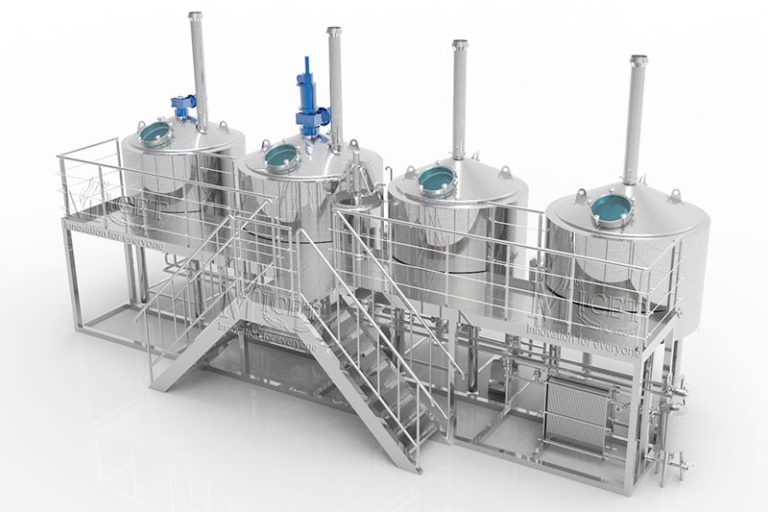
Advantages of External Heaters
- Good boiling effect can lower the pH value of the wort, so the color is also lighter.
- The number of wort cycles can be adjusted and according to the process requirements.
- It can improve the use rate of bitter substances, and protein precipitation is more thorough.
- The steam pressure is low, only about 0.3MPa, which can evaporate more volatile substances that are unfavorable to the taste
Disadvantages of external heaters
- Because the wort circulation requires a pump as power, the power consumption is high.
- The external heater is easy to cause a large amount of radiation heat loss.
- The flow rate of wort in the external heater is high, and it is easy to form a large shear force, resulting in a decrease in the quality of beer flavor.
Summarize
While steam heating has the highest upfront investment and installation costs of any heating method, steam is popular in breweries for some reasons. A large reason is that the early investment in the steam boiler can use steam heating when there are many heating needs in the brewery, such as providing heating for the CIP station.
Whether it is from a process point of view or for many batches, steam heating with better control, scalability, versatility and heating rate is the best choice. When using steam, the mash, boil and hot water tanks can be heated at the same time, which is all helpful when many brews are required per day. The initial cost is repaid by lower maintenance cost and saved time and manpower later, which also makes brewing easier.
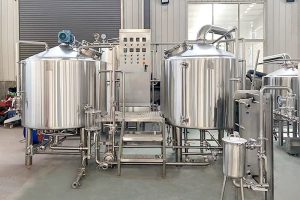
Fabricante de equipos para fábricas de cerveza Los suministros de elaboración de cerveza proporcionados por Micet Craft pueden satisfacer sus necesidades de elaboración de cerveza,
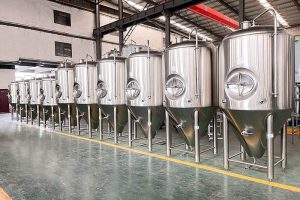
China fabricante y proveedores de equipos de elaboración de cerveza Micet Craft ha colaborado con cervecerías de muchos países del mundo para suministrarles equipos de

Best brewhouse equipment manufacturer from china Brewing good beer requires brewhouse equipment. Whether you are brewing beer for home, business or brewery, Micet Craft can

China stainless steel fermentation vessels manufacturer The fermentation tank is where the beer carry out the fermentation process, it provides a place suitable for life
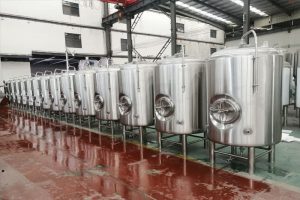
Tanque de cerveza brillante profesional fabricante de China El tanque brillante es un recipiente para almacenar y carbonatar la cerveza, también se le llama tanque

El mejor fabricante de sistemas de elaboración de cerveza de china Micet Craft es un fabricante profesional de sistemas de elaboración de cerveza en China.
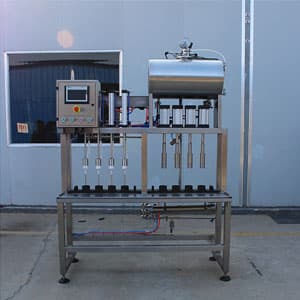
Clasificación de la máquina de llenado de cerveza La máquina llenadora de cerveza es el equipo central de la línea de producción de cerveza. Nuestro

Fabricante de equipos para fábricas de cerveza Los suministros de elaboración de cerveza proporcionados por Micet Craft pueden satisfacer sus necesidades de elaboración de cerveza,

China fabricante y proveedores de equipos de elaboración de cerveza Micet Craft ha colaborado con cervecerías de muchos países del mundo para suministrarles equipos de

Best brewhouse equipment manufacturer from china Brewing good beer requires brewhouse equipment. Whether you are brewing beer for home, business or brewery, Micet Craft can

China stainless steel fermentation vessels manufacturer The fermentation tank is where the beer carry out the fermentation process, it provides a place suitable for life

Tanque de cerveza brillante profesional fabricante de China El tanque brillante es un recipiente para almacenar y carbonatar la cerveza, también se le llama tanque

El mejor fabricante de sistemas de elaboración de cerveza de china Micet Craft es un fabricante profesional de sistemas de elaboración de cerveza en China.

Clasificación de la máquina de llenado de cerveza La máquina llenadora de cerveza es el equipo central de la línea de producción de cerveza. Nuestro

